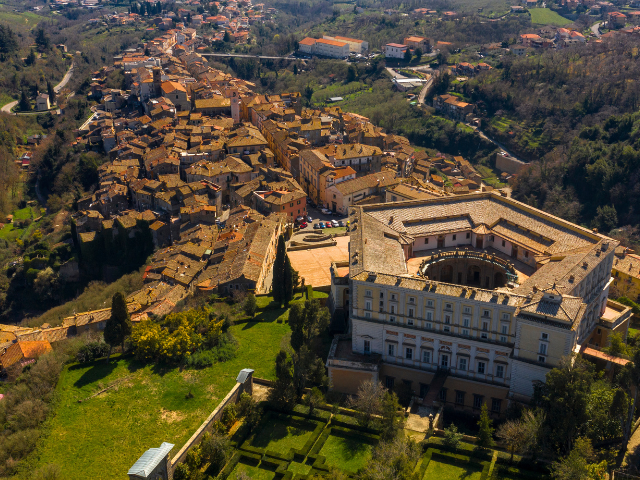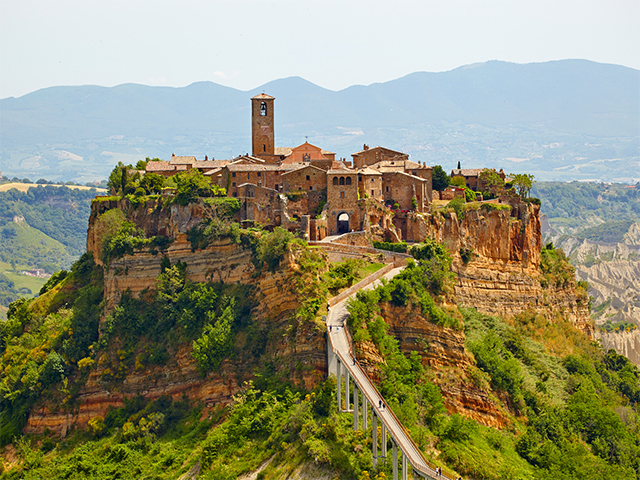Montalto di Castro: discovering the old town
What to see and visit in the old town of Montalto di Castro: history, main buildings, monuments and tips on what to eatHalfway between Tarquinia and Capalbio, there is Montalto di Castro, surrounded by the Thyrrenean coast, the Fiora river and the spledid green spaces of the Maremma Laziale.
The rich territory of Montalto includes the old Etruscan city of Vulci, which remains are still visitable at the Archaeological Park, and the suggestive Medieval old town that we will discover together in this article… follow us!
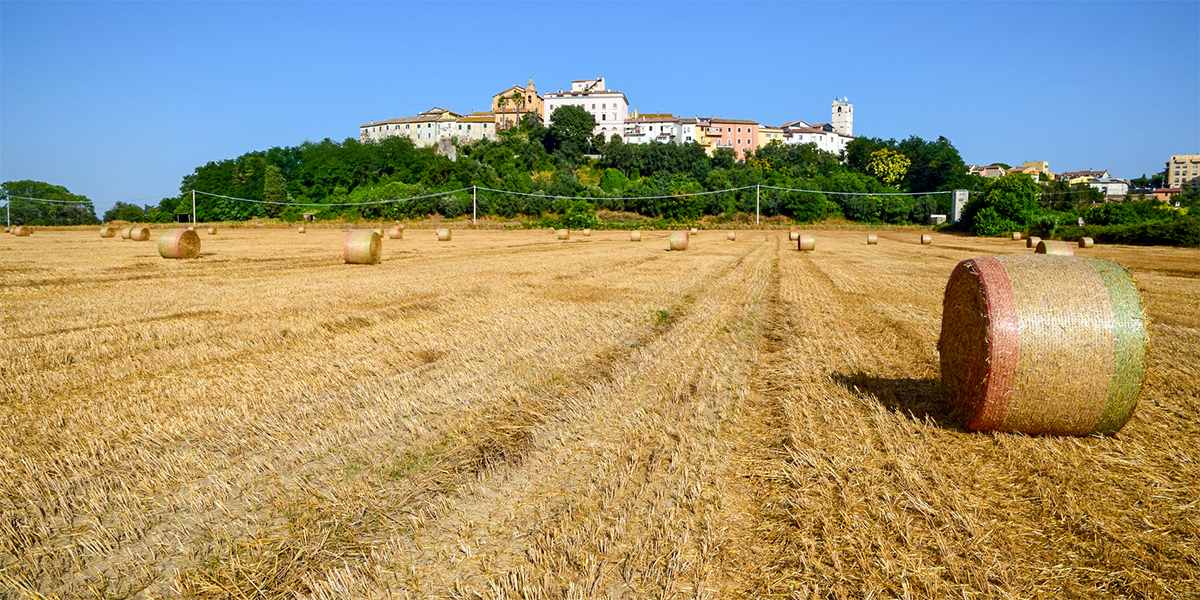
Montalto di Castro in the heart of the Maremma Laziale
A bit of history
Legend has it that Montalto di Castro was founded around the 5th century ad by the inabitants of the ancient coast city of Gravisca, who, running from the Saracen incursions, found shelter at a hill inland. From legend to history there's a brief bit and in 853 ad Montis Alti appeared officially for the first time in Pope Leon IV papal seal where it was established that the city belonged to the Diocese of Tuscania.
During Medieval times and Renaissance, Montalto was disputed by two powerful families, who left worthy signs still visible nowadays, including the Guglielmi Casle built by the Orsini family.
In 1535 Montalto di Castro entered the Grand Duchy of Castro under the control of the Farnese family, who ruled for over a century. In this period, the Palazzo Funari was built, with a façade with a fake relief and window architraves.
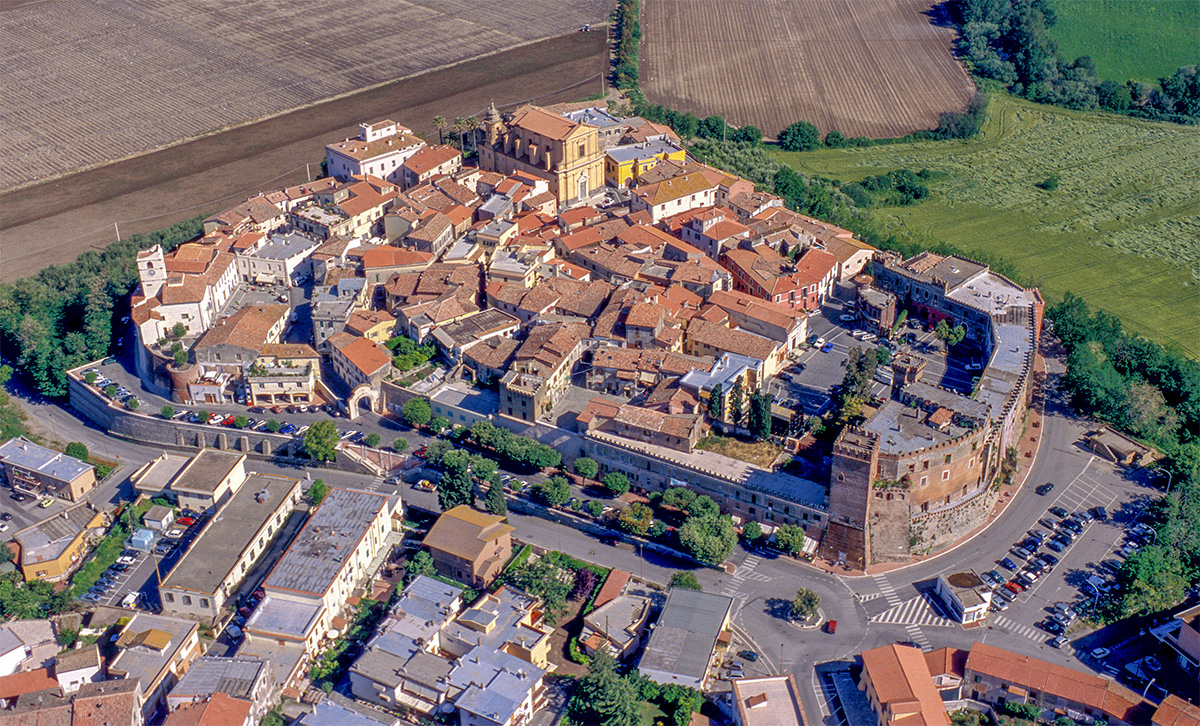
Montalto di Castro: aerial panoramic views of the old town
In the seventeenth century, the city experienced a phase of rapid decline with the final blow in 1649, when involved in the wars of Castro it was razed to the ground and its territory returned in the hands of the Papal State
Under the pontifical guidance, a series of important works were initiated, including the bridge over the river Fiora (Ponte del Diavolo), under which passed the aqueduct for the Fontana del Mascherone and the construction of a new hospital in the monastery of San Sisto.
In 1778, Pope Pius VI also promoted a series of major reforms that improved the conditions of the city, hit hard by the epidemics. At this time took place the construction of the Church of S. Maria Assunta and the Fontana delle Tre cannelle.
Finally, in 1871, Montalto became part of the Italian State and the following year the King Vittorio Emanuele II granted to add to the appellative name of "di Castro". Then started a slow but steady development that not even the bandids could stop.
A walk around the old town
Al the old town of Montis Altis is proof of the Medieval past of the city:
small squares, lanes, alleys crowned by archs and pieces of the city walls make it a magical and suggestive place where it is easy to get lost and run into always new and surprising corners!
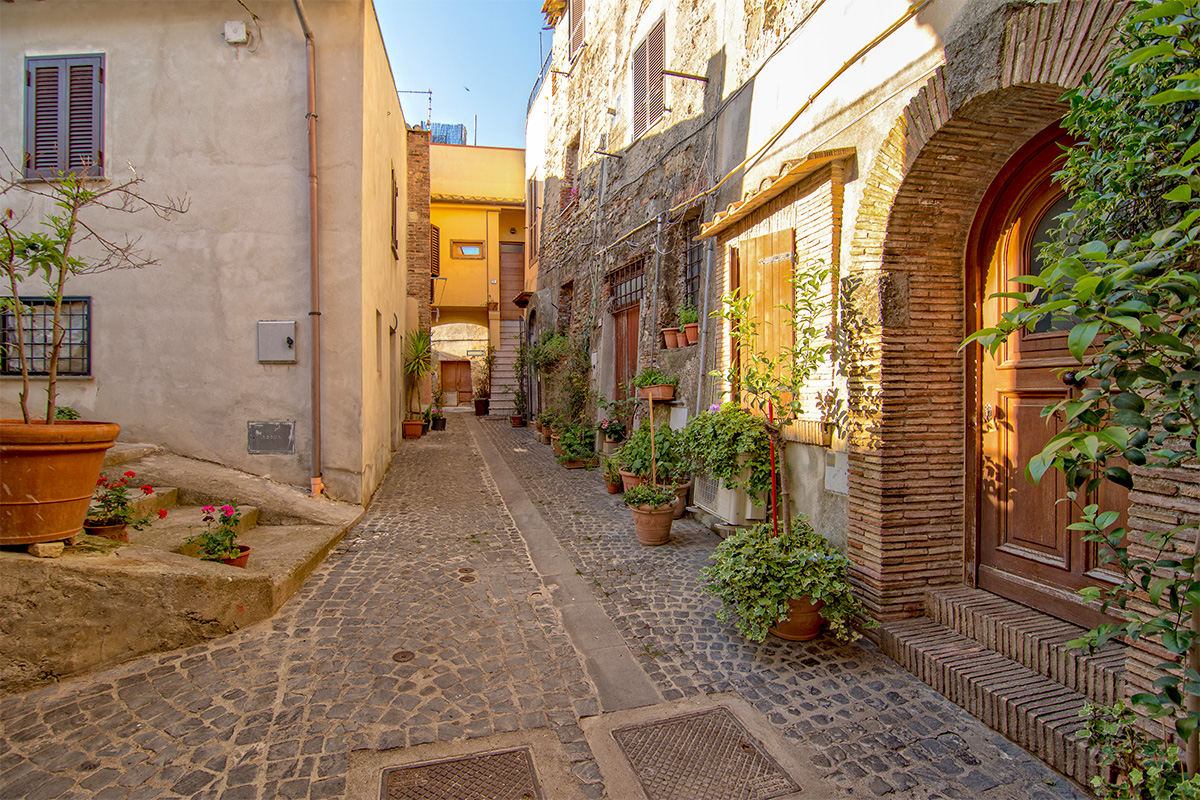
Montalto di Castro: a suggestive alley of the old town
The main buildings include the outstanding Guglielmi Castle that, with the quadrangular tower covered with ivy, can be considered the symbol of the city.
Even if the legend attributes the constructionos the castle to Desiderio (8th century), duke of Tuscia and then king of the Lombards, the building built around the 15th century by the Orsini, undergoing over time various changes and restructuring: among these, the battlements and the loggia, whose works were concluded in the first years of the 20th century.
The castle has on one side the walls of the town, of which follows the curved line thus acquiring a convex shape. This side is the oldest part of the fortress: on its walls, surmounted by Guelph battlements, you can admire numerous openings in Renaissance and nineteenth-century styles. The other wing of the Castle was built later in the 18th century, completely in brick.
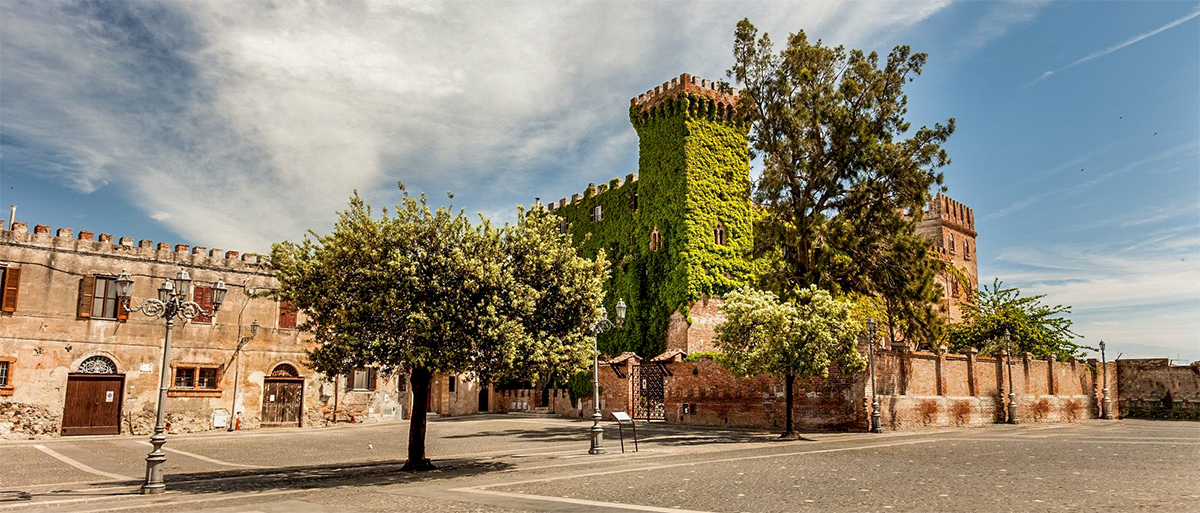
Montalto di Castro, Piazza Felice Guglielmi with the medieval castle
From a gate on the northern section of the walls you can access Piazza Felice Guglielmi, inside which stands out the neoclassical facade of the Church of Santa Croce.
The interior has a single nave and above the altar, guarded within a reliquary in glass, there is preserved a valuable painting depicting "The Madonna della Vittoria".
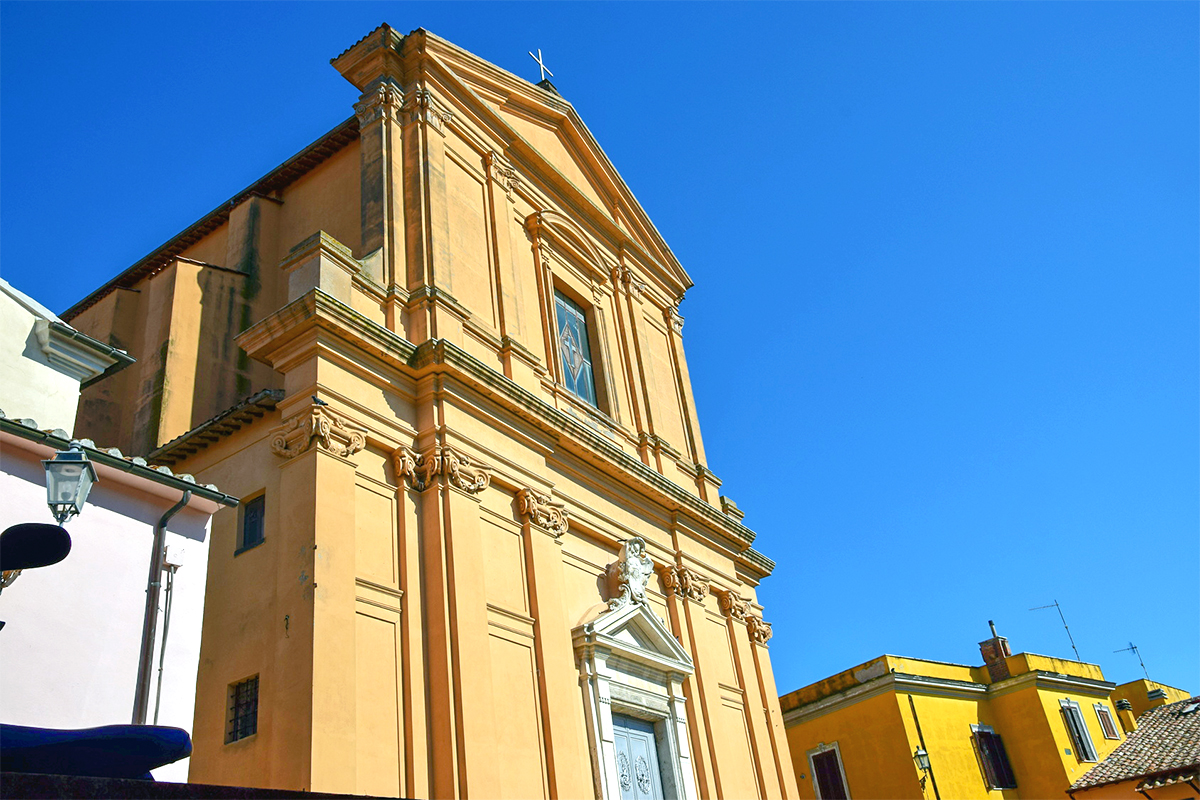
Montalto di Castro, Church of Santa Maria Assunta
Walking by via Soldatelli you will arrive in front of the beautiful 18th century facade of the Church of Santa Maria Assunta.
The building shows above the Travertine portal the coat of arms of Pope Pius VI Braschi who promoted its complete reconstruction in 1783.
The interior, with a single nave is decorated with interesting paintings from the end of the 18th century while in a reliquary, on the right, are preserved the relics of Quirino and Candido, patron saints of Montalto.
Finally, reaching Piazza Giacomo Matteotti we find the Town Hall. The building, born as a Franciscan convent, was later transformed into a fortress by the Farnese and enclosed within the city walls.
The Lea Padovani Theater
From Piazza Giacomo Matteotti, crossing Via Aurelia Tarquinia in just a few minutes you will reach the modern Town Theater Lea Padovani.
The theater, inaugurated in 2012, looks like a large parallelepiped in reinforced concrete, which evokes two important symbols of the city, the ancient temple of Vulci, on the part of the foyer and the stalls, and the modern thermoelectric Alessandro Volta, on the scenic tower.
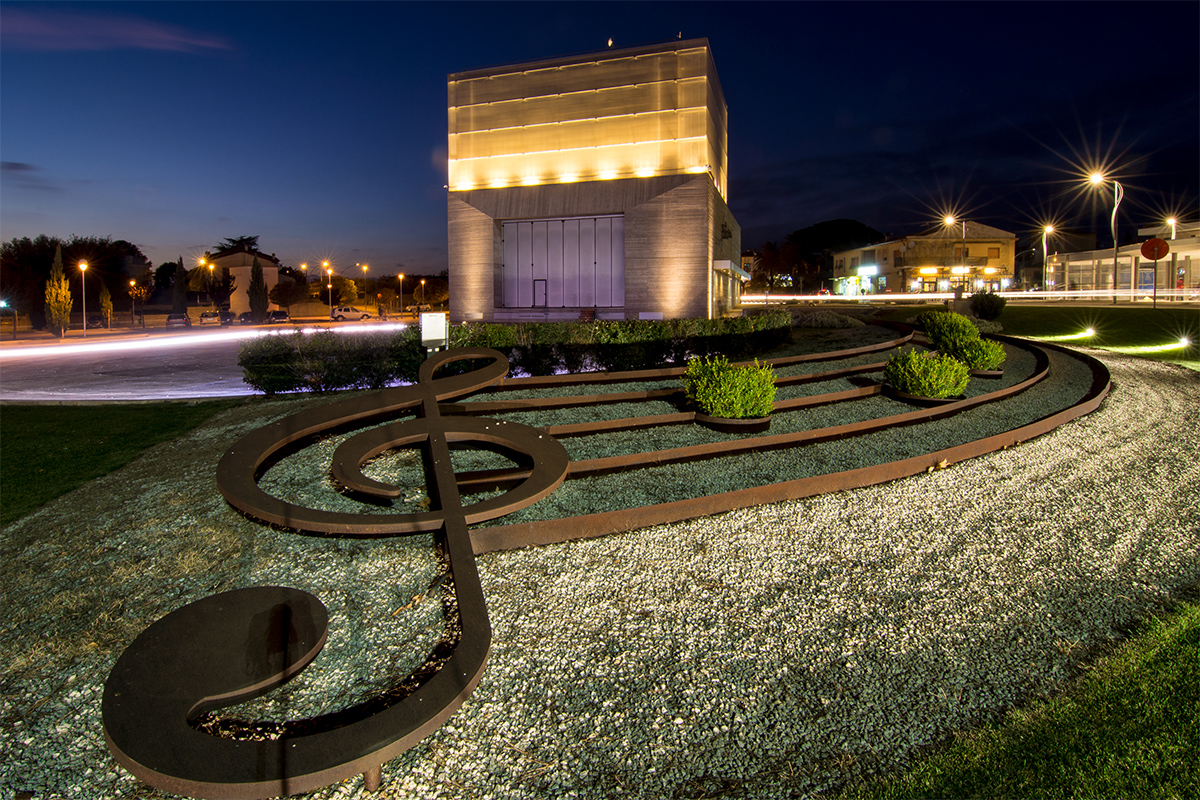
Lea Padovani Theater in Montalto di Castro
The scenic tower is particularly out of the ordinary: made of polycarbonate, by day it seems to disappear and at night it is illuminated creating a very picturesque effect.
The theater, which has 400 seats in the stalls and a large open area, is dedicated to Lea Padovani, important theater, cinema and television actress born in Montalto in 1923, who worked with important names like Vittorio De Sica, Dino Risi, Peppino De Filippo, Totò and Aldo Fabrizi.
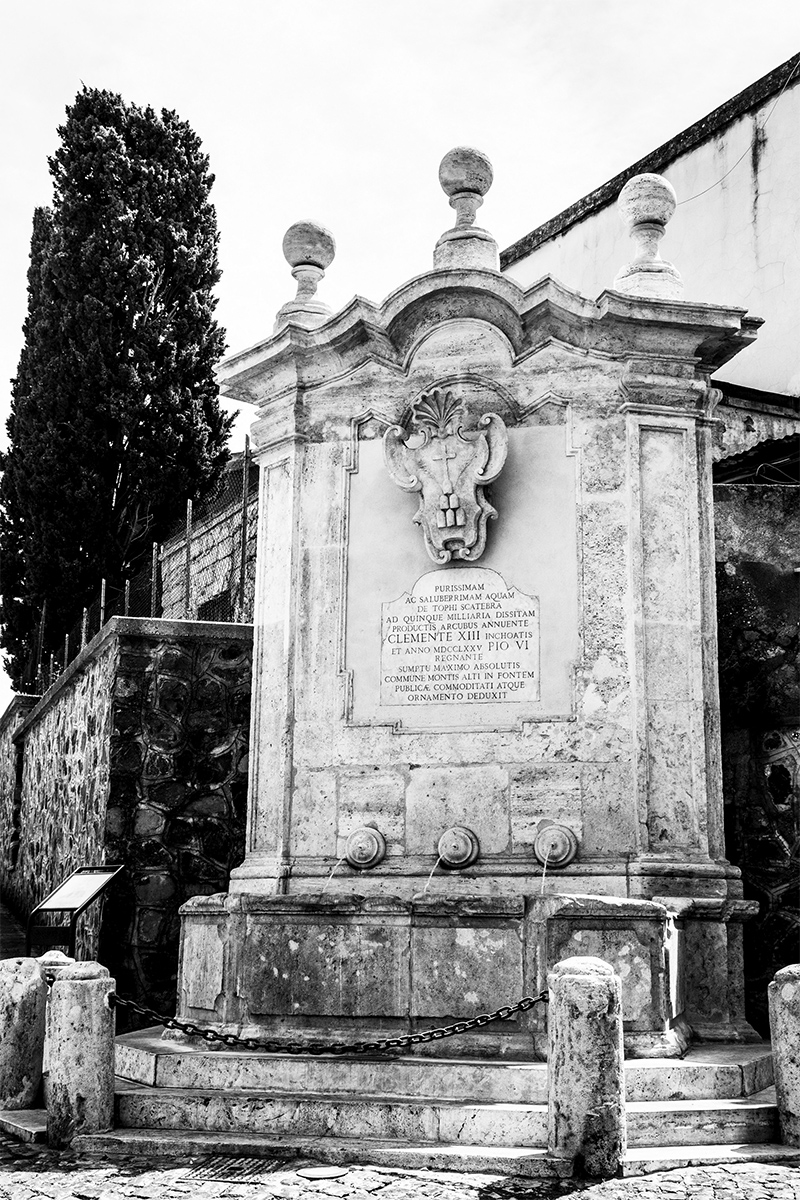
Fontana delle 3 cannelle - Montalto di Castro
Outside the old town
Just outside the historical center, close to via Aurelia, there are the eighteenth-century fountains of the Tre Cannelle (three spouts) and del Mascherone, of which we have already spoken.
The first of the two was built in 1775, due to the construction of the aqueduct that brought water into the city from the source of Tufo di Campomorto.
With a trapezoidal shape and built in travertine, it is preceded by six pillars and three steps; on the façade, surmounted by three cusps with balls it is possible to observe, in addition to the spouts from which the water falls, the coat of arms of the Municipality and the epigraph that attests its origin.
Finally, going out of the city, along the road leading to Marina di Montalto it is worth stopping by the monumental complex of San Sisto, built by Augustinian friars in the 13th century and later converted first in a Lazzaretto and later in a hospital. Recently restored, part of the building houses the Library and the Municipal Historical Archive.
Montalto di Castro: what to eat?
After a nice walk, you will surely get an appetite; but do not worry because in Montalto di Castro and surroundings you will find the tasty cuisine of the Maremma.
Particularly, you can not miss a dish made of the typical ingredient of this area: the green asparagus of Montalto di Castro.
Delicious and very versatile, this vegetable cultivated in the whole territory of Montalto also boasts an important gastronomic primacy: it is, in fact, the first Italian food to have obtained (July 2013) a recognition of quality by an international organization (DNV).
Not by chance a must do in Spring in Montalto di Castro is the traditional asparagus festival: fun, entertainment and, of course, good food.

Green asparagus of Montalto di Castro, excellence product of the area
Before leaving this page, please read:
A RELAXING DAY AT TERME DI VULCI
ARCHAEOLOGICAL PARK OF VULCI
CASTELLO DELL'ABBADIA
Useful information
Montalto di Castro (VT)
- HOW TO GET THERE
Montalto di Castro is only 37 km away from the Port of Civitavecchia. You can reach it:
By car: take the Raccordo Civitavecchia-Viterbo/E840 and continue on the SS1 Via Aurelia/E80 towards SP105 until you find directions for Montalto di Castro.By train: from the Station of Civitavecchia take the first train bound for Montalto di Castro (around 23 minutes).



 PORT MOBILITY CIVITAVECCHIA
PORT MOBILITY CIVITAVECCHIA








